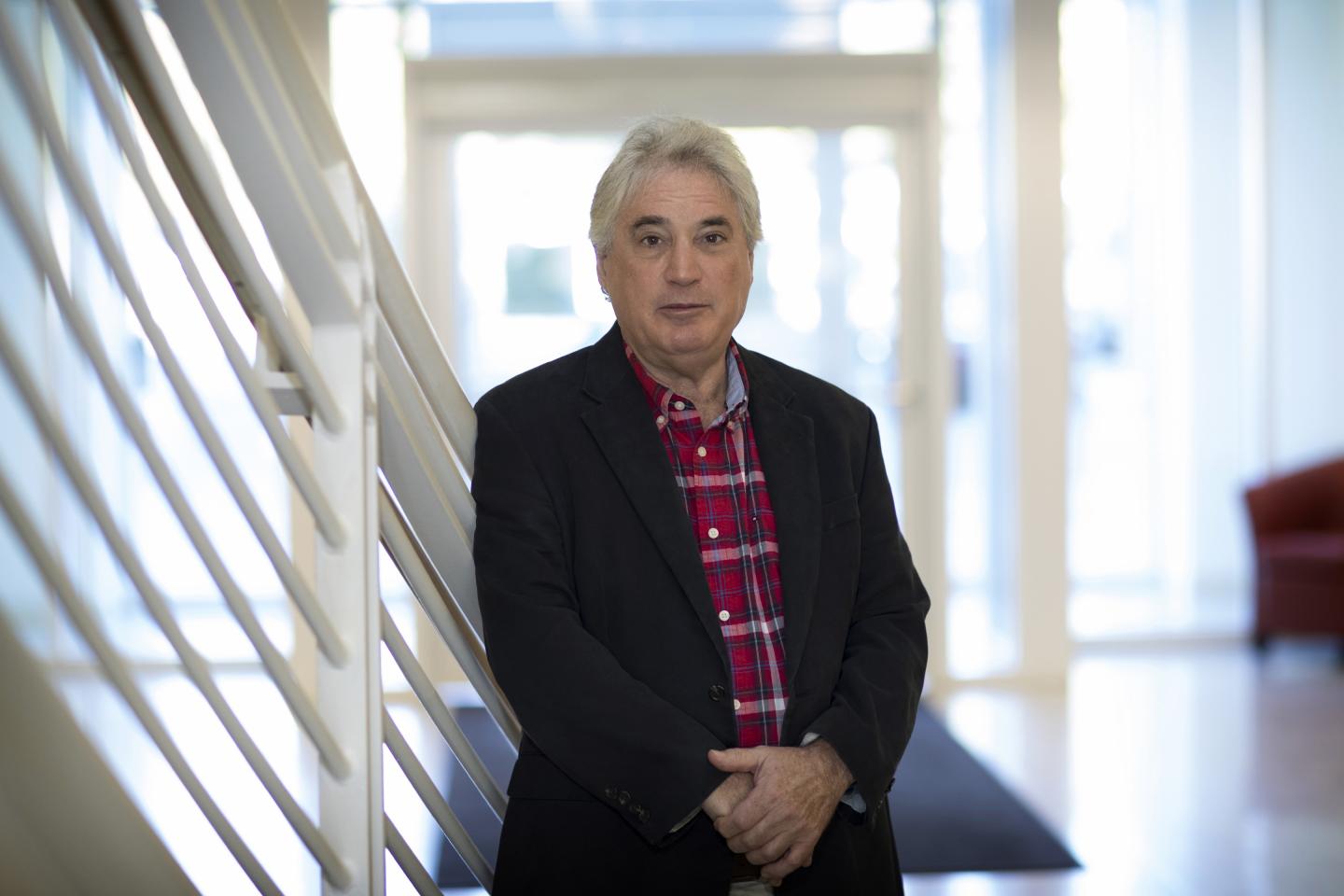Distinguished research career earns him one of science’s top honors

Credit: Dan Addison | UVA Communications
Edward H. Egelman, PhD, of the University of Virginia School of Medicine, has been elected to the National Academy of Sciences, one of the highest honors for a scientist.
Egelman was among 100 new members elected to the National Academy this week, bringing the number of active members to 2,347.
“This is an amazing honor,” he said. “It is truly gratifying to have my work receive such recognition.”
Important Scientific Research
Egelman is Harrison Distinguished Professor in UVA’s Department of Biochemistry and Molecular Genetics. His work focuses on using cryo-electron microscopy and 3D modeling to map out the world that is far too small for even the most powerful light microscopes to see.
Egelman has attracted national and international headlines for discoveries such as how urinary tract infections take hold and how an almost indestructible virus survives and thrives in nearly boiling acid. One of his latest papers reveals how strange bacteria that live in soil and sediment can conduct electricity, potentially paving the way for tiny-but-ultrapowerful batteries and pacemakers without wires.
His research has primarily targeted protein-DNA interactions inside cells and on an important protein called actin. The scope of his work expanded greatly, however, after he developed techniques to determine the atomic structure of spiral-shaped structures commonly found in nature, such as the hair-like pilli on the surface of bacteria. His department chairman, Anindya Dutta, MD, PhD, has dubbed Egelman “the world’s go-to person” for developing imaging and mathematical tools to understand filaments formed by DNA and proteins.
Egelman has authored more than 230 papers and has lectured internationally. He has been active in the Biophysical Society, having served as a past president and as editor-in-chief of Biophysical Journal.
“While we have focused on very basic questions in biology, we are sure that there may be many future applications ranging from new ways to treat bacterial infections to developing new materials inspired by nature,” he said. “We are constantly surprised about both how much we do not know and how scientific research can lead us in unexpected directions.”
About Egelman
Egelman obtained his PhD in biophysics from Massachusetts’ Brandeis University, where he also obtained his undergraduate degree in physics. He completed his postdoctoral work at the MRC Laboratory of Molecular Biology in Cambridge, England. He joined UVA in 1999 and was presented with UVA’s Distinguished Scientist Award in 2016.
“Over decades, Dr. Egelman has consistently developed new methods in electron-microscopy and cryo-electron microscopy to solve the structures of protein-nucleic-acid-lipid complexes. He has made surprising discoveries in areas as diverse as how bacteria responsible for urinary tract infections remain attached to the surface of the epithelium, how bacteria and their viruses survive in boiling acid, or how protein filaments present in nature can conduct electricity,” Dutta said. “We are delighted that a UVA scientist has been given this recognition for his achievements.”
“Dr. Egelman’s election to the National Academy of Sciences is a wonderful recognition of his long track record of outstanding research,” said David S. Wilkes, MD, dean of the UVA School of Medicine. “We are proud to have him as part of the School of Medicine, and we are excited to see what discoveries he makes next.”
###
To keep up with the latest medical research news from UVA, subscribe to the Making of Medicine blog at http://makingofmedicine.
Media Contact
Josh Barney
[email protected]
Original Source
https:/



